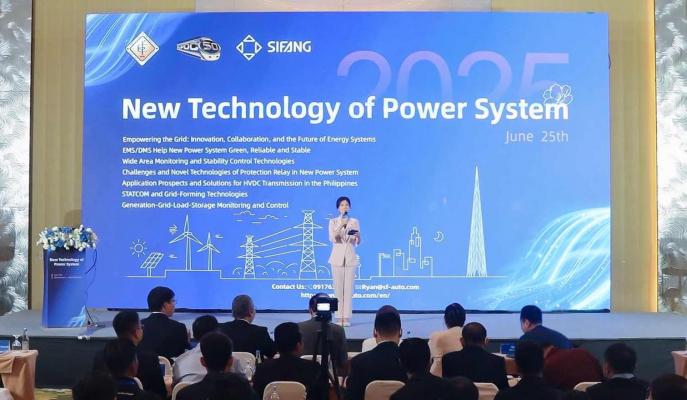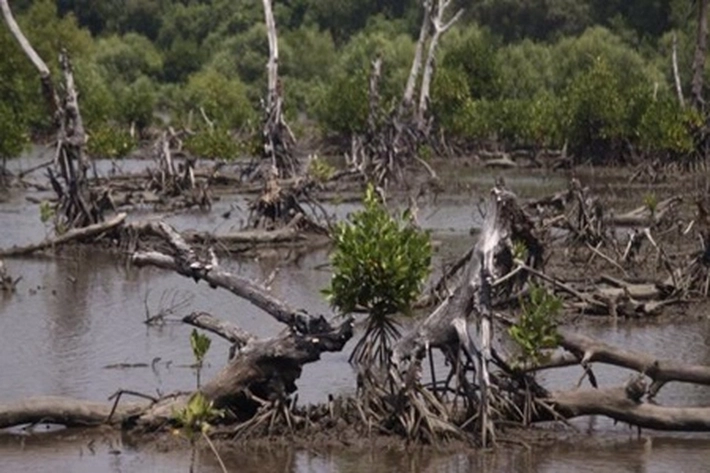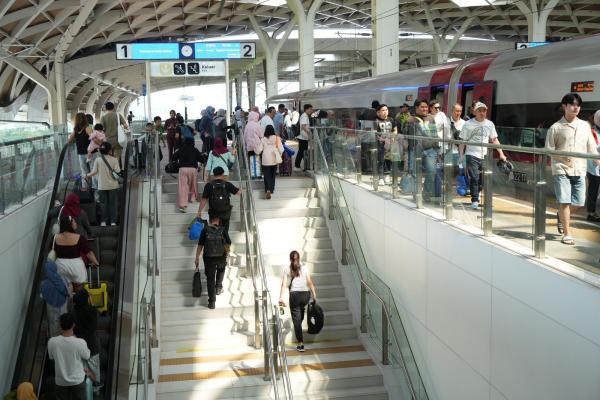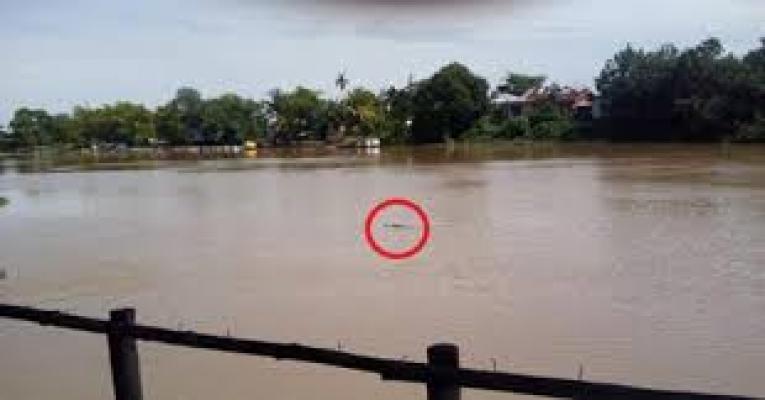- Home
- MediaOutReach
- QIMC Announces Landmark Discovery of Hydrogen Soil Samples over 1000ppm on Recently Completed 9.7km North-South Line, Outlining Highly Charged 70km2 Hydrogen Area
QIMC Announces Landmark Discovery of Hydrogen Soil Samples over 1000ppm on Recently Completed 9.7km North-South Line, Outlining Highly Charged 70km2 Hydrogen Area
Kamis, 05 September 2024 | 11:13

QUEBEC CITY, QUEBEC -
Newsfile Corp.
- 4 September 2024 - Quebec Innovative Materials Corp. (CSE: QIMC)
(FSE: 7FJ) ("QI Materials", "QIMC" or the "Company"), is proud to
announce a landmark discovery made in collaboration with our Quebec
partner, the Institut National de la Recherche Scientifique (INRS). The
findings from the recently completed 9.7km north-south line 7 have
uncovered hydrogen soil samples with concentrations exceeding 1000 parts
per million (ppm). Significantly, we observed 8 readings exceeding 600
ppm, with 2 of those surpassing 1000 ppm. Additionally, the average
measured 531.9 ppm over a 450 ms interval between the readings above
1000 ppm (Fig. 1). Professor Marc Richer-Laflèche, Scientific Head of
Applied Geoscience Laboratory comments, "These highly anomalous values
can be considered first-class given the absolute values that, locally,
exceed the instrumental detection limit of 1000 ppm. The results from
Line 7 validate the geological hydrogen model interpretations we
outlined in previous announcements."

The data distribution is illustrated in Figure 2, which maps the anomalies against a backdrop of satellite imagery.

Figure 1. Section showing the variability of H2 concentrations measured in the soils of line 7 at St-Bruno-de-Guigues. Data are given as a function of distance in meters
To view an enhanced version of this graphic, please visit:
https://images.newsfilecorp.com/files/7968/222081_817f3f7364ef2850_001full.jpg

Figure 2: Map of the distribution of hydrogen anomalies in the soils of the St-Bruno-de-Guigues area. Data projected onto satellite image background.
To view an enhanced version of this graphic, please visit:
https://images.newsfilecorp.com/files/7968/222081_817f3f7364ef2850_002full.jpg
Exceptional natural hydrogen levels
"We are thrilled to announce this transformative discovery outlining a highly charged 70km2 hydrogen area within our 250km2 Ville Marie property," said John Karagiannidis, CEO of QIMC. "The hydrogen concentrations identified by INRS mark a significant advancement in our pursuit of clean, renewable energy solutions. This breakthrough highlights our leadership in the hydrogen sector and strengthens our commitment to advancing sustainable technologies that support Quebec's clean emission goals. We eagerly anticipate the next steps in developing and commercializing this remarkable hydrogen resource."
Strategic Impact
To delineate the area of high hydrogen values observed along line 1 of the July 2024 soil gas survey, the INRS field crew extended line 1 westward during the first week of August 2024. This extension begins at the boundary between forest and agricultural land and ends near the chemin des secondes et troisième rangs of St-Bruno-de-Guigues (line 7). "As initially predicted in our hydrogen model, the intensity of the soil hydrogen anomalies gradually decreased towards the west (Figure 3)", notes Professor Marc Richer-Lafleche. "This decrease in concentration emphasizes a westward closure of the hydrogen anomaly domain. This spatial variability may reflect, among other things, the presence of contrasting geological units (arkosic sandstones, Cobalt Group conglomerates, Ordovician dolomitic limestones) and also the probable presence of the Rivière-Blanche fault, which may be present in the St-Bruno-de-Guigues area beneath the thick glacial-lacustrine sediments", states Professor Marc Richer-Lafleche.

Fig. 3: Location map of the soil gas survey for Line 7 (North-South) and East-West Lines 1, 2, 3, 4 and 5.
To view an enhanced version of this graphic, please visit:
https://images.newsfilecorp.com/files/7968/222081_817f3f7364ef2850_003full.jpg
"We believe that this fault is partly responsible for the emplacement of hydrogen in the St-Bruno-de-Guigues area," said John Karagiannidis, CEO of QIMC. The location of this fault is a priority for QIMC and INRS and will be the subject of a high spatial resolution audiomagnetotelluric survey to be carried out in the fall of 2024.
"In the area of the sampling stations containing the hydrogen anomalies, there is no evidence in the field (or in the MRNF databases) of the presence of wells (former mining or oil wells), which could explain, among other things, the presence of H2 anomalies from anthropogenic sources. What's more, unlike the false H2 anomalies regularly reported in the scientific literature, the H2 anomalous zones at St-Bruno-de-Guigues extend for more than one kilometer (along north-south or east-west axes), which cannot be explained by anthropogenic sources.
It is also unlikely that the gas anomalies are the result of subsurface biogenic processes, as the glaciolacustrine sediments hosting the H2 anomalies and also the H2-depleted zones (background) are very similar from one sampling site to another. These Quaternary sediments are essentially dominated by a mineral matrix with little potential to generate significant amounts of hydrogen through fermentation reactions with organic matter. In contrast to the study by Etiope et al. (2024), which was carried out on soils from the Pusteria Valley region (northern Italy), the H2 concentrations observed in soils from the Lake Témiscamingue graben are not associated with very high CH4 and CO2 concentrations. Therefore, it is likely that the source of hydrogen in St-Bruno-de-Guigues soils is geological rather than biogenic," details Professor Marc Richer-Lafleche.
Next Steps:
Soil sampling is scheduled in the fall of 2024 to further analyze the granulometric and elemental characteristics of glaciolacustrine sediments in the St-Bruno-de-Guigues area.
Gravimetry and audiomagnetotellurism (AMT) geophysics are also planned for the fall of 2024 to assess variations in the thickness of local sedimentary rock deposits (gravity troughs) over the Archean basement. These data will allow us to locate the areas most likely to contain reservoir rocks. AMT data will allow us to locate graben-related faults in the St-Bruno-de-Guigue area that are covered by Quaternary sediments.
"The high levels of hydrogen discovered by INRS underscore our commitment to leading the transition to sustainable, clean energy solutions," said John Karagiannidis. "We are excited about the upcoming phases of commercial development and the opportunity to advance our renewable energy initiatives."
REF: Etiope, G., Ciotoli, G., , Bena, E., Mazzoli, C., Rockmann, T., Sivan, M., Squartini, A., Laemmel, A., Szidat, S., Haghipour, N. and Sassi, R., 2024. Surprising concentrations of hydrogen and non-geological methane and carbon dioxide in the soil . Science of the Total Environment, 948.
About the INRS and Pr. Marc Richer-LaFlèche, P.Geo.
The Institut National de la Recherche Scientifique ("INRS") is a high-level research and training institute. Pr. Richer-LaFlèche's team has exceptional geological, geochemical and geophysical experience specifically in the regions of QIMC's newly acquired claims. They have carried out over six years of geophysical and geochemical work and collected thousands of C1-C4 Soil-Gas analyses.
M. Richer-LaFlèche also holds an FRQNT grant, in partnership with Quebec MRN and the mining industry, to develop and optimize a Soil-Gas method for the direct detection of mineralized bodies and faults under Quaternary cover. In addition to sulphide gases, hydrogen was systematically analyzed in the numerous surveys carried out in 2023 in Abitibi, Témiscamingue and also in the Quebec Appachian. M. Richer-LaFlèche is the Qualified Person responsible for the technical information contained in this news release and has read the information contained herein.
In addition, the INRS team has several portable gas spectrometers and the sampling equipment and logistics necessary for taking gas samples and geophysical measurements on the ground or in the aquatic environment. He is a professional geologist registered with the Ordre des géologues du Québec and is the Qualified Person responsible for the technical information contained in this news release and has read the information contained herein and approves the press release.
For more information about Quebec Innovative Materials Corp. and its products, please visit www.qimaterials.com.
QUÉBEC INNOVATIVE MATERIALS CORP.
John Karagiannidis
Chief Executive Officer
Tel: +1 438-401-8271
For further information, please contact:
Email: info@qimaterials.com
Neither the Canadian Securities Exchange nor its Regulation Services Provider (as that term is defined in the CSE policies) accepts responsibility for the adequacy or accuracy of this news release and has neither approved nor disapproved the contents of this news release.
The data distribution is illustrated in Figure 2, which maps the anomalies against a backdrop of satellite imagery.

Figure 1. Section showing the variability of H2 concentrations measured in the soils of line 7 at St-Bruno-de-Guigues. Data are given as a function of distance in meters
To view an enhanced version of this graphic, please visit:
https://images.newsfilecorp.com/files/7968/222081_817f3f7364ef2850_001full.jpg

Figure 2: Map of the distribution of hydrogen anomalies in the soils of the St-Bruno-de-Guigues area. Data projected onto satellite image background.
To view an enhanced version of this graphic, please visit:
https://images.newsfilecorp.com/files/7968/222081_817f3f7364ef2850_002full.jpg
Exceptional natural hydrogen levels
"We are thrilled to announce this transformative discovery outlining a highly charged 70km2 hydrogen area within our 250km2 Ville Marie property," said John Karagiannidis, CEO of QIMC. "The hydrogen concentrations identified by INRS mark a significant advancement in our pursuit of clean, renewable energy solutions. This breakthrough highlights our leadership in the hydrogen sector and strengthens our commitment to advancing sustainable technologies that support Quebec's clean emission goals. We eagerly anticipate the next steps in developing and commercializing this remarkable hydrogen resource."
Strategic Impact
To delineate the area of high hydrogen values observed along line 1 of the July 2024 soil gas survey, the INRS field crew extended line 1 westward during the first week of August 2024. This extension begins at the boundary between forest and agricultural land and ends near the chemin des secondes et troisième rangs of St-Bruno-de-Guigues (line 7). "As initially predicted in our hydrogen model, the intensity of the soil hydrogen anomalies gradually decreased towards the west (Figure 3)", notes Professor Marc Richer-Lafleche. "This decrease in concentration emphasizes a westward closure of the hydrogen anomaly domain. This spatial variability may reflect, among other things, the presence of contrasting geological units (arkosic sandstones, Cobalt Group conglomerates, Ordovician dolomitic limestones) and also the probable presence of the Rivière-Blanche fault, which may be present in the St-Bruno-de-Guigues area beneath the thick glacial-lacustrine sediments", states Professor Marc Richer-Lafleche.

Fig. 3: Location map of the soil gas survey for Line 7 (North-South) and East-West Lines 1, 2, 3, 4 and 5.
To view an enhanced version of this graphic, please visit:
https://images.newsfilecorp.com/files/7968/222081_817f3f7364ef2850_003full.jpg
"We believe that this fault is partly responsible for the emplacement of hydrogen in the St-Bruno-de-Guigues area," said John Karagiannidis, CEO of QIMC. The location of this fault is a priority for QIMC and INRS and will be the subject of a high spatial resolution audiomagnetotelluric survey to be carried out in the fall of 2024.
"In the area of the sampling stations containing the hydrogen anomalies, there is no evidence in the field (or in the MRNF databases) of the presence of wells (former mining or oil wells), which could explain, among other things, the presence of H2 anomalies from anthropogenic sources. What's more, unlike the false H2 anomalies regularly reported in the scientific literature, the H2 anomalous zones at St-Bruno-de-Guigues extend for more than one kilometer (along north-south or east-west axes), which cannot be explained by anthropogenic sources.
It is also unlikely that the gas anomalies are the result of subsurface biogenic processes, as the glaciolacustrine sediments hosting the H2 anomalies and also the H2-depleted zones (background) are very similar from one sampling site to another. These Quaternary sediments are essentially dominated by a mineral matrix with little potential to generate significant amounts of hydrogen through fermentation reactions with organic matter. In contrast to the study by Etiope et al. (2024), which was carried out on soils from the Pusteria Valley region (northern Italy), the H2 concentrations observed in soils from the Lake Témiscamingue graben are not associated with very high CH4 and CO2 concentrations. Therefore, it is likely that the source of hydrogen in St-Bruno-de-Guigues soils is geological rather than biogenic," details Professor Marc Richer-Lafleche.
Next Steps:
Soil sampling is scheduled in the fall of 2024 to further analyze the granulometric and elemental characteristics of glaciolacustrine sediments in the St-Bruno-de-Guigues area.
Gravimetry and audiomagnetotellurism (AMT) geophysics are also planned for the fall of 2024 to assess variations in the thickness of local sedimentary rock deposits (gravity troughs) over the Archean basement. These data will allow us to locate the areas most likely to contain reservoir rocks. AMT data will allow us to locate graben-related faults in the St-Bruno-de-Guigue area that are covered by Quaternary sediments.
"The high levels of hydrogen discovered by INRS underscore our commitment to leading the transition to sustainable, clean energy solutions," said John Karagiannidis. "We are excited about the upcoming phases of commercial development and the opportunity to advance our renewable energy initiatives."
REF: Etiope, G., Ciotoli, G., , Bena, E., Mazzoli, C., Rockmann, T., Sivan, M., Squartini, A., Laemmel, A., Szidat, S., Haghipour, N. and Sassi, R., 2024. Surprising concentrations of hydrogen and non-geological methane and carbon dioxide in the soil . Science of the Total Environment, 948.
About the INRS and Pr. Marc Richer-LaFlèche, P.Geo.
The Institut National de la Recherche Scientifique ("INRS") is a high-level research and training institute. Pr. Richer-LaFlèche's team has exceptional geological, geochemical and geophysical experience specifically in the regions of QIMC's newly acquired claims. They have carried out over six years of geophysical and geochemical work and collected thousands of C1-C4 Soil-Gas analyses.
M. Richer-LaFlèche also holds an FRQNT grant, in partnership with Quebec MRN and the mining industry, to develop and optimize a Soil-Gas method for the direct detection of mineralized bodies and faults under Quaternary cover. In addition to sulphide gases, hydrogen was systematically analyzed in the numerous surveys carried out in 2023 in Abitibi, Témiscamingue and also in the Quebec Appachian. M. Richer-LaFlèche is the Qualified Person responsible for the technical information contained in this news release and has read the information contained herein.
In addition, the INRS team has several portable gas spectrometers and the sampling equipment and logistics necessary for taking gas samples and geophysical measurements on the ground or in the aquatic environment. He is a professional geologist registered with the Ordre des géologues du Québec and is the Qualified Person responsible for the technical information contained in this news release and has read the information contained herein and approves the press release.
For more information about Quebec Innovative Materials Corp. and its products, please visit www.qimaterials.com.
QUÉBEC INNOVATIVE MATERIALS CORP.
John Karagiannidis
Chief Executive Officer
Tel: +1 438-401-8271
For further information, please contact:
Email: info@qimaterials.com
Neither the Canadian Securities Exchange nor its Regulation Services Provider (as that term is defined in the CSE policies) accepts responsibility for the adequacy or accuracy of this news release and has neither approved nor disapproved the contents of this news release.
BERITA LAINNYA
Selasa, 01 Juli 2025 | 10:08

Selasa, 01 Juli 2025 | 08:50

Selasa, 01 Juli 2025 | 08:49

Selasa, 01 Juli 2025 | 08:48

Selasa, 01 Juli 2025 | 08:46

Selasa, 01 Juli 2025 | 08:45

Selasa, 01 Juli 2025 | 08:41




























